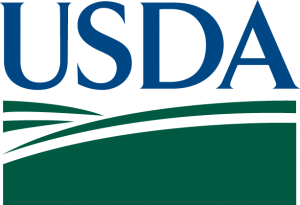 On March 11, at the National Farmers Union Annual Convention, U.S. Department of Agriculture Secretary Tom Vilsack announced the finalization of a rule to align the voluntary “Product of USA” label claim with consumer understanding of what the claim means. Vilsack also announced USDA is awarding $9.5 million to 42 projects through the Local Meat Capacity grant program to expand processing options for the meat and poultry industry and new actions to ensure transparency and a fair and competitive market in the U.S seed industry.
On March 11, at the National Farmers Union Annual Convention, U.S. Department of Agriculture Secretary Tom Vilsack announced the finalization of a rule to align the voluntary “Product of USA” label claim with consumer understanding of what the claim means. Vilsack also announced USDA is awarding $9.5 million to 42 projects through the Local Meat Capacity grant program to expand processing options for the meat and poultry industry and new actions to ensure transparency and a fair and competitive market in the U.S seed industry.
“Today’s announcement is a vital step toward consumer protection and builds on the Biden-Harris Administration’s work to bolster trust and fairness in the marketplace where smaller processors can compete,” said Vilsack. “This final rule will ensure that when consumers see ‘Product of USA’ they can trust the authenticity of that label and know that every step involved, from birth to processing, was done here in America.”
“In addition, the Local Meat Capacity grants are addressing critical processing infrastructure needs for local and regional livestock and poultry producers, ensuring their products get to market efficiently and cost effectively, which supports local economies, new jobs, and more choices for consumers,” Vilsack added. “USDA is also committed to boosting the farmer’s voice in our seed patent system and enforcing the disclosure laws on the books as we deliver more and better choices for farmers.”
These actions build on President Biden’s Executive Order on Promoting Competition in the American Economy and the Biden-Harris Administration’s Action Plan for a Fairer, More Competitive, and More Resilient Meat and Poultry Supply Chain. They complement a series of other all-encompassing actions by USDA to increase competition in agricultural markets, create a fairer playing field for small- and mid-size farmers, lower grocery costs for consumers, and strengthen local and regional food systems.
“Product of USA” Final Rule
USDA’s final “Product of USA” rule allows the voluntary “Product of USA” or “Made in the USA” label claim to be used on meat, poultry and egg products only when they are derived from animals born, raised, slaughtered and processed in the United States. The rule will prohibit misleading U.S. origin labeling in the market, and help ensure that the information that consumers receive about where their food comes from is truthful.
USDA’s final “Product of USA” rule is supported by petitions, thousands of comments from stakeholders, and data from a nationwide consumer survey.
Under the final rule, the “Product of USA” or “Made in the USA” label claim will continue to be voluntary. It will also remain eligible for generic label approval, meaning it would not need to be pre-approved by USDA’s Food Safety and Inspection Service before it can be used on regulated product, but would require the establishment to maintain documentation on file to support the claim. The final rule also allows the use of other voluntary U.S. origin claims on meat, poultry and egg products sold in the marketplace. These claims will need to include a description on the package of the preparation and processing steps that occurred in the United States upon which the claim is made.
USDA has also published an updated labeling guidance on the use of voluntary U.S.-origin label claims to provide examples of claims and the types of documentation that establishments may maintain to support use of the claims. The guidance will be open for public comment for 60 days after publishing in the Federal Register. Public comments can be submitted at www.regulations.gov.
Establishments voluntarily using a claim subject to the final rule will need to comply with the new regulatory requirements by January 1, 2026, and are encouraged to do so as soon as practicable after the publication of this final rule.
Local Meat Capacity Grant Program
USDA is also awarding $9.5 million to 42 projects through the Local Meat Capacity grant program. This initial set of awards through Local MCap is for Simplified Equipment Only projects.
In April 2023, USDA announced up to $75 million available for Local MCap to fund innovative projects designed to build resilience in the meat and poultry supply chain by providing producers with more local processing options and strengthening their market potential. This is part of a larger, $1 billion commitment to expand independent meat and poultry processing capacity and give farmers additional, local options to obtain fairer prices for the animals they raise and give consumers more options in the marketplace. The Local MCap grant program is targeted to support meat and poultry processors with smaller-scale projects, with a goal to increase processing availability and variety for local and regional livestock producers. The program is administered by the Agricultural Marketing Service with funding from President Biden’s American Rescue Plan.
AMS has entered into a cooperative agreement with the New Hampshire Community Loan Fund to execute and administer Local MCap awards. NHCLF is responsible for making grant awards and administering grant funds.
USDA will announce additional awards for both Equipment and Processing Expansion Local MCap grants at a later date.
USDA is announcing this first set of awards for simplified equipment projects in 27 states and Puerto Rico. This set of awards fund projects from $10,000 to $250,000 to purchase processing equipment such as meat grinders, stuffers, and smokers. For example:
- Yoder’s Butcher Barn, a Maryland-based livestock processing business, is owned and operated by third-generation butchers and specializes in livestock slaughter services for its community. They will use Local MCap grant funds to purchase a new smokehouse, linker, mixer-grinder, patty machine, and saws to double their weekly beef and pork capacity. In addition to improving processing efficiency, this project will create three to four new jobs and facilitate livestock sourcing from an additional 28 farmers.
- Nordik Meats is a small, independently owned meat processing facility in Southwest Wisconsin. Through Local MCap, Nordik Meats will purchase a grinder, meatball maker, and packaging equipment. This equipment will provide local producers with the ability to create new value-added products for local consumers, maximize the value of their animals, utilize byproducts, and increase animal harvest. Nordik Meats will increase the number of livestock processed annually by 100% over two years, implement new processing technologies, train 12 existing staff, hire four new employees, and benefit 350 local small family farms.
For more information, on Local MCap and to view a complete list of the awarded projects visit the AMS Local MCap webpage.
Farmer Seed Liaison Initiative
USDA is taking new actions to enhance transparency and competition in the U.S. seed industry through its Farmer Seed Liaison Initiative, which aims to elevate the voices of farmers, small- and mid-size seed companies, and independent plant breeders in policy and decision-making processes to improve competition, choice, and fairness in the seed marketplace.
Today, AMS announced it will be launching a nationwide Website Monitoring Program focused on Federal Seed Act brand and variety name compliance. Key to the monitoring efforts, regulatory specialists are conducting in-depth reviews of websites, including links to scanned pamphlets and PDFs, that advertise Federal Seed Act-regulated seeds. AMS will approach these reviews and any subsequent enforcement using a risk-based approach that considers the impact and reach of the violation and the efforts of those responsible for the website to make the information compliant. These efforts are the next steps in USDA’s initiative to boost variety transparency to the farmer at the point of sale and follow on the letters that USDA sent to the executives of the largest seed companies in November. Additionally, USDA will increase outreach efforts, including a webinar to further educate producers about labeling requirements and participation in industry meetings. The agency produced a similar webinar with the American Seed Trade Association.
For more information on the Farmer Seed Liaison Initiative, visit the USDA Seed Liaison webpage.
For more news of interest to the specialty food industry, subscribe to Gourmet News.
 The European Union Parliament has adopted its position on establishing a verification and pre-approval system for environmental marketing claims to protect citizens from misleading ads:
The European Union Parliament has adopted its position on establishing a verification and pre-approval system for environmental marketing claims to protect citizens from misleading ads:






